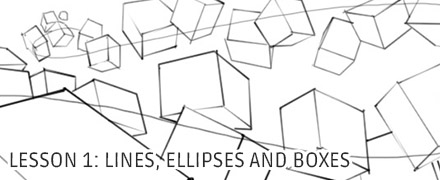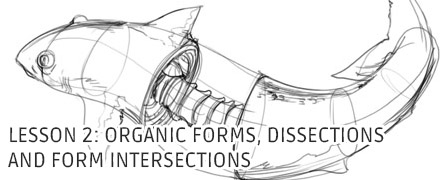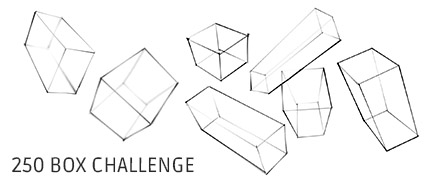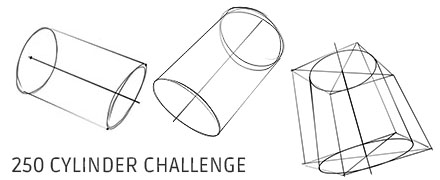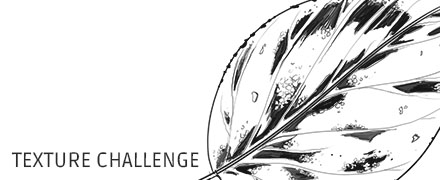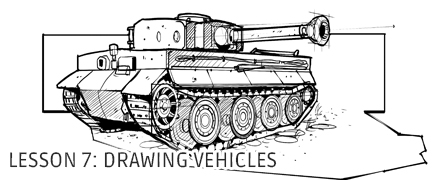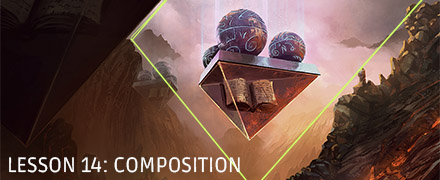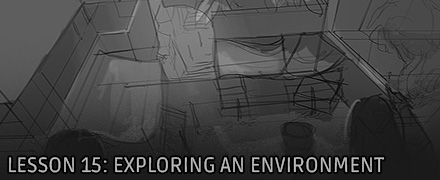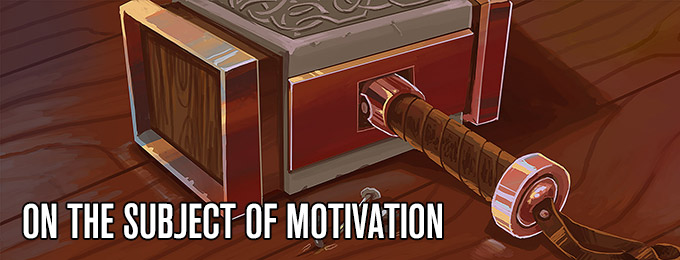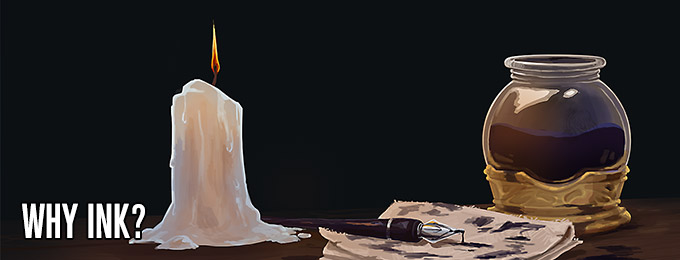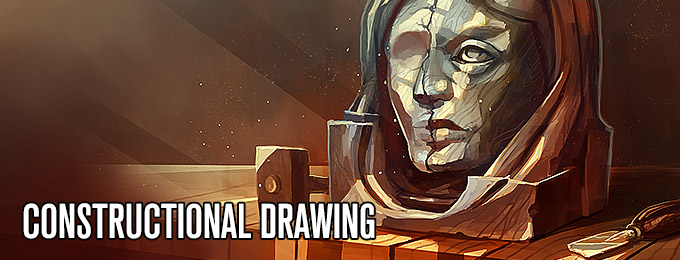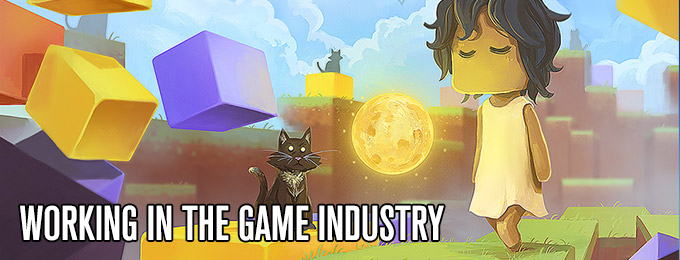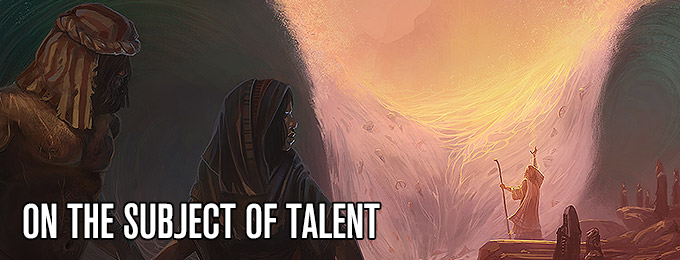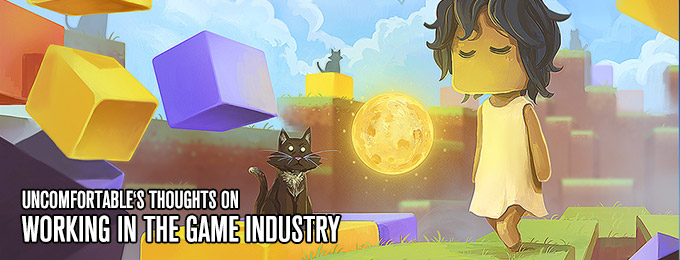It's a good question, and one I receive often enough. Why do you insist that we draw with ink? Why fineliners/felt tip pens? Why not pencil, hell - why not digital? There's an answer, but there's many layers to it. Let's deal with it in parts.
First, start with why I push people to work with ink. There's a few reasons:
- People tend to be wasteful, and ink won't let you hide it
When we sketch as kids, we tend to really go at the paper. Draw draw draw, don't think, just get it down on the page, something will emerge. I'm not going to tell you that's the wrong way to go about things, but I'm not going to encourage it. Instead, the lessons here focus on stepping back and thinking out each stroke. We don't think on the page, as I sometimes refer to it. What we put down is the result of a planned action.
- It helps build confidence by causing you to fail
I remember several years ago - November 2010 - a friend of mine (who eventually encouraged me to come down to Los Angeles and pursue proper art classes) was showing me one of her old sketchbooks. It was full of pen drawings, and what amazed me wasn't the quality of them - they were mainly experimental doodles accompanied by Muse lyrics - but it was the confidence with which she drew them. There was no concern of being judged there, all I saw was the pure joy of drawing. Looking back at my own sketchbooks, which mostly lay empty, it dawned on me that I was constricted by a fear of failure. I wouldn't draw a thing until I could convince myself that it would be a success. More often than not, I could not convince myself of that, so I didn't even bother trying. This held me back, and up until that point had done so for years. It dawned on me that I should not be waiting for assurance of success - failure was waiting for me, and I had to embrace it.
It certainly took some time to come to this conclusion, but a couple years later I decided every night after work to fill in two pages of a small sketchbook with drawings, done in ballpoint pen. The ink would force me to face my fears, and to accept the permanence of my drawings. There would be no erasing, there would be no hope of a pristine sketchbook. I wouldn't show this to anyone it would just exist to help me become acquainted with my good friend, failure.
- Everything is black and white - there are no gradients to complicate matters
This is one of the things that makes ink challenging - and specifically here is why I strongly recommend people work with felt tip pens, rather than ballpoints which still allow you to sketch lightly. When you put down a line, it will sit on the page, stark and bold. Assuming your pen's new with a good ink flow (it's surprising how often you'll get duds so be sure to test each one out before buying if you can, most stores selling them individually will let you), there will be only white (the blank page) and black (where ink has fallen). Working with this medium immediately eliminates the dimension of value between those two points, and in doing so, it makes things simpler. Not easier, because we often try to fall back on sketching lightly, but it reduces the number of challenges we face simultaneously (because even light sketching is a skill to be mastered). We prefer to deal with things one at a time.
This restriction allows us to focus purely on line. Now, many people stress this, and it is true, that line does not exist in the world around us. That doesn't mean it's not valuable, and understanding it is one of the simpler ways (in my limited experience) of wrapping one's mind around shape and form. After all, while lines do not exist, the silhouettes they enclose certainly do, and it is those solid silhouettes that many students forget to acknowledge.
Furthermore, being left to work with felt tip pens will help you develop a fine sense of pressure control. When we start off with these tools, our lines are almost always clunky and awkward, with no fine tapering to them and no character. As we learn to control the amount of pressure we use, we discover how to make some lines heavier than others, adding a sense of dynamism to our drawings and bringing them to life.
So in the above points, I do pretty much explain why pencil doesn't cut it - it's too easy to sketch lightly, which undermines confidence and allows you to avoid planning things out in your mind before executing. But why not digital? After all, with digital media we can control every characteristic of our tools and have them fairly accurately mimic traditional media. Furthermore, we've got fancy devices like the Wacom Cintiq Companion and the iPad Pro with the Apple Pencil, surely it should be okay to work with those! They're so convenient! Paper is of the past, old man!
- Depending on your device, drivers can be awful, and that can screw with people who are new to drawing and new to working digitally
Honestly this isn't as much of an issue with devices like the iPad Pro, Cintiqs and whatever else, but it's a HUGE problem when dealing with Wacom's tablet lines (Bamboo, Intuos, Intuos Pro, etc.) and other tablet brands. Drivers can give you hell when it comes to the brush jittering at small movements. Really, any kind of technical glitch will add an extra layer of confusion between you and what you're learning - after all, that early on it's difficult to say whether or not the mistake you're making really is your fault, your device's fault, or the most likely option of a mix of the two. That is why I always insist people first do the exercises traditionally, where there is no extra layer of abstraction. Fully understand what you're meant to be aiming for and how it feels, then try it digitally. You'll be able to identify whether there is an added issue with the calibration of the device you're using, and you'll be able to move forward from there.
- Digital media breeds impatience and a lack of respect for your work
Now, don't crucify me for this yet - I will admit, I do 99% of my work digitally, I spent most of my formative years doing digital art, and I still would be lost without Photoshop. Don't get me wrong - digital media is great. It's just not a good choice for learning.
We don't even realize it, but our everyday interaction with digital devices is based on immediate gratification. In this digital sphere, a normally patient individual will grow disgruntled if a webpage doesn't load in under a second. We don't have time to read, we want to be told - with pictures, and sound, and explosions. And when we want to draw, we want to explode onto the canvas, sketching and painting furiously to have something presentable as quickly as possible. This may not be your experience - it may not be this exaggerated and this obvious, but in all likelihood it is a part of your interaction with digital media and digital tools.
Even when conscious of it, it's difficult to force ourselves to stop and think. Not impossible by any stretch, but when one has trouble even noticing the problem in the first place, you know it's going to be challenging at least to stop it from happening. As is the vein with the methodology I espouse here, every difficulty you face must serve a purpose. Every added challenge must help you develop your skills more efficiently and more effectively - if it doesn't, it's just dead weight. That's what digital tools are in this situation. Dead weight.
I've witnessed countless individuals suddenly develop a respect for every line and every stroke that had not been there before, despite drawing digitally for months or years. Hell, I certainly noticed that change in myself. With the physical ink in front of you, there comes an appreciation that feels so much less tangible when represented in pixels.
Of course, I am not for a second saying that ink is king and one should never work in graphite, charcoal, digital media or whatever else. That would be utter nonsense. What I do believe is that every tool has its advantages and its disadvantages, and it turns out that felt tip pens are great for helping you learn the skills we explore in these lessons. Once learned, those same skills can be applied effectively in all sorts of other media. They're mechanical skills, observational skills and psychological skills that can be applied well beyond the scope of ink.
At the end of the day, there will be people who will respond with, "Well I don't like drawing in pen." The fact of the matter is, what you like is either the most important thing in the world, or completely and utterly irrelevant. If you are looking to learn because you think it's a fun hobby and are interested in it for its amusement value alone, then absolutely use whatever tool you like. There is still much to be learned from these lessons regardless of what tools you use. There's absolutely nothing wrong with doing this as a hobby, and no one should ever look down on you for it.
If, however, you wish to learn to draw as a means to an end - to learn to visually communicate so you can move forwards in a particular career path, or just because you are interested in improving as efficiently as you can, then remember this - you don't get to say, "I don't like it." If you haven't tried something enough to fully appreciate its worth, if you haven't conquered a challenge, you are not in a position to claim that the challenge is not worth your effort and time. Once it's overcome, it is your right to denounce it, to say it was a waste. But until then, you're merely avoiding it because it frightens you, or because you know you can't do it. And you're wrong.

